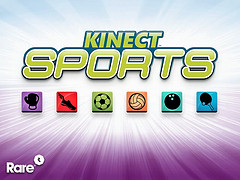
- Image by The_Smiths via Flickr
When the Nintendo Wii came out in 2006, it was a revolution in the way people gamed— in fact, Nintendo wanted to call it the Revolution. Shelving the idea of a joystick, Nintendo decided to be creative and have the console sense the remote’s movements and translate them to actions.
Four years passed. No other gaming company had come out with anything as revolutionary as the Wii. In fact, no major consoles have been released since 2006, and that continues to be the case. However, the Kinect for Xbox 360 proves to be the exception because it turns the five-year-old device into a brand-new revolutionary console.
Microsoft, through Project Natal, attempted to make a gaming system where actions would be controlled solely by body movements detected by a sensor and a camera. They announced the project in June 2009, and the Kinect consumer product was released in October 2010. The Kinect is a small device with a camera, sensor, microphone, and a cord to connect it to any Xbox 360 that has been produced since the console’s launch in 2005.
When I set up the Kinect, I initially experienced some issues with updating my console. I have the Xbox Arcade from 2009, and the dashboard needed an update to support the Kinect. However, once the updating process finished, setting up the Kinect was a breeze.
The Kinect sensor bundle comes with Kinect Adventures, a game that is akin to the bundled Wii Sports that comes with the Wii, but more advanced.
When you insert the disc, setup instructions appear for the Kinect sensor. “Stand back, or the sensor will not be able to see you properly.” That was the extent of the initialization process.
Now for the fun part: the actual gaming experience. I tested the Kinect with three of the launch titles: “Kinect Adventures,” “Kinect Joy Ride,” and “Kinect Sports.”
“Kinect Adventures” was a great introduction to the Kinect system.
My adventures started with a rafting ride, which was controlled by my moving from left to right and jumping to maneuver my virtual character on the raft. Movements were accurate and precise, and there were no major hiccups in the experience.
The “Adventures” game is not for only one person, however.
When I asked a family member to join in, the experience was seamless, and we were instantly competing against each other in a game of wallball.
These multiplayer aspects make you really appreciate the lack of controllers, as everyone knows the problems associated with sharing controllers between gamers.
“Kinect Joy Ride” was a free demo that I downloaded, and the experience was lukewarm.
Racing consisted of holding my hands in the form of a steering wheel and pulling in my arms and pushing them back out when I needed a power boost. It did not feel as interactive as using an actual racing wheel for the Xbox 360, and I feel that racing is the not the proper target genre for the Kinect.
The third game was “Kinect Sports,” and I was, as with “Kinect Adventures,” amazed at all of the functionality it contained.
Games included, among others, bowling, beach volleyball, and ping pong, and each one of them felt very well thought-out and seamless. Definitely a must-buy if you are considering the Kinect.
Was I impressed with the Kinect system? Absolutely. It worked nearly perfectly, and I felt like I was in another century when my body movements controlled the game.
Was I impressed by the launch titles? Somewhat. Two of the games felt very well integrated with the system, but Joy Ride just didn’t seem to fit with the idea of your body controlling the game.
The current selection is limited; however, developers are already starting to come out with more titles for the Kinect.














































